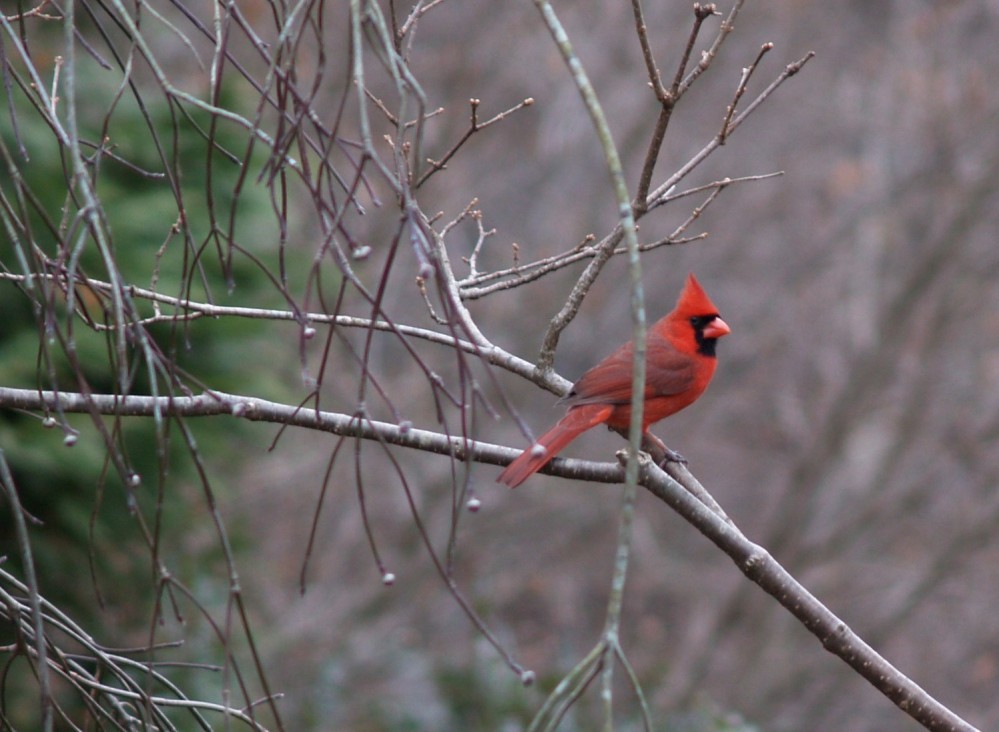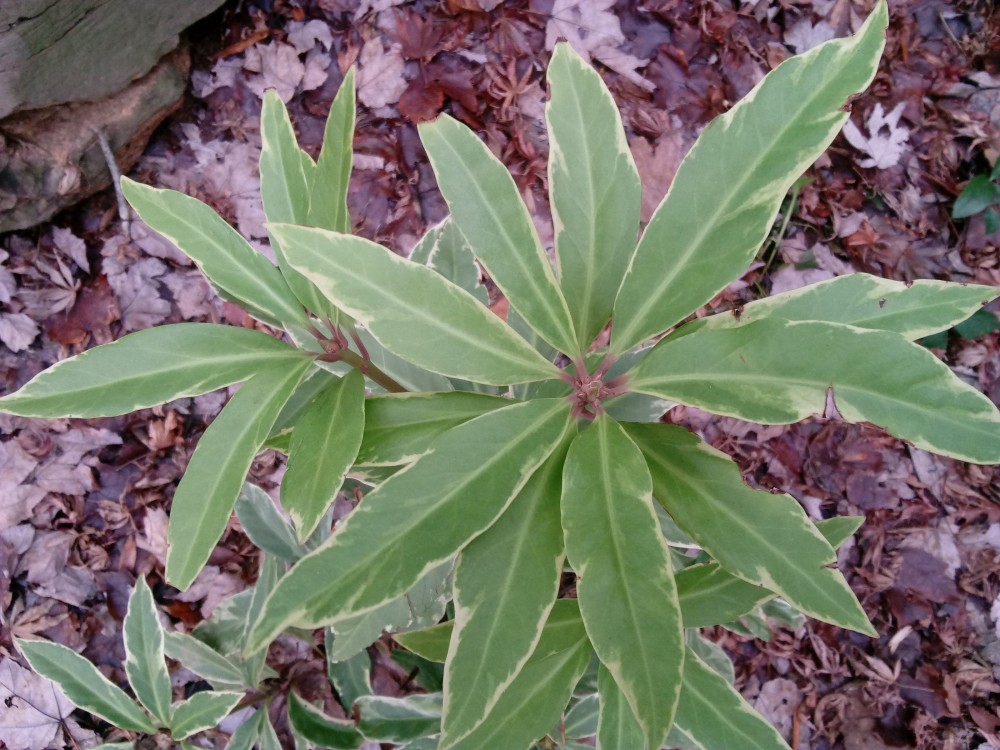Typically, I see no robins in the garden from late autumn until the period in February when temperatures become more mild, promising that spring is near. But today, in mid-January dozens jump anxiously from a large holly halfway across the garden to the edge of the forest, and back again, repeatedly. I wonder what is exciting them, but also, why have they not flown south?
Bluejays, cardinals (above), and chickadees also seem more animated than usual as they pluck sunflowers from the feeder. Perhaps they are aroused by the robins’ commotion, or is it the impending storm that will bring an inch or more of chilly rain later this afternoon? As the rain passes through it will be followed by our coldest days of the winter, with temperatures falling below ten degrees overnight, and possibly nearer zero (Fahrenheit) tomorrow.
While I prefer milder temperatures, this cold is of little concern except that it will test the hardiness of fatsias (above) and Florida anise shrubs (below) that are protected by cages loosely filled with leaves. While the ground remains covered by inches of insulating snow, this will disappear quickly in the evening downpour.
There is also a minor concern that the incoming freezes will increase the layer of frozen soil, to further delay planting of miscellaneous corms and rhizomes delivered earlier in the week. Even in the garage, temperatures will be frigid, so several handfuls of bark chips have been added to each bag of roots for some increased insulation. 
Flowers in the garden are well prepared for the freeze. After several nights dropping into the teens, opened flowers of camellias have turned brown, and other buds remain tightly bound. Blooms of mahonias (above) and witch hazels will curl tightly for protection, and these are unlikely to be damaged in this cold that is typical for midwinter. While robins are agitated for some reason, I am prepared to spend several restful, and comfortably warm days indoors.
Robins are year-round residents here, Dave. Over here in Culpeper we frequently have large flocks of them out & about during periodic thaws, & last winter I enjoyed the thrilling sight of probably 50 or more of them all over a large Holly tree in town plucking at the berries.
Once things warm up in a few months, the flocks will break up & they’ll start pairing off.
Some stay and some head south, but robins are rarely seen in the garden until late February. Except today.
Dear Dave,
Why didn’t the robins fly south? 🙂
Perhaps some did. Some robins migrate to follow the food trail, others do not. The question is why this number made an appearance today, and why were they agitated?
Every year about this time there is one day when the large American Holly in my yard is swarmed by hundreds of robins. Obviously the berries have reached peak ripeness and the word goes out on the robin grapevine. By the end of the day, not a berry remains.
It is a fascinating spectacle every single year.
In general, birds do not favor berries of hollies, but robins seem less particular. In late winter, robins pick at nandina berries that no other birds will go near.
I do not think of robins as the sort that fly south. Perhaps this is where they come when they fly south from farther north. I notice them more in winter. They grab worms that come to the surface when lawns get saturated by the rain.
It seems like predicting the long term weather paterns of an incoming season used to be simpler. I am not certain. Rhody did not get much of an undercoat before this winter, which would suggest that he expects mild weather. However, his coat did not change much at all, as if he is just not reacting to the weather. I really do not know what to think of it.
Check out this article: Why Are You Seeing Robins in Winter?
https://blog.nature.org/science/2018/02/07/why-are-you-seeing-robins-in-winter/
My American Hollies were raided recently by a big flock of Robins. They stay in my yard year-round. No mow, no pesticides, lots of bushes, trees, and water sources. I think they like the environs around here 😉
It seems that robins vary, some migrate and others don’t. I don’t recall seeing one until late winter, and certainly have never seen dozens in such a state of excitement.
Robins are year-round here, but I too noticed a plethora of ’em Downtown before the cold front came in. Usually they signal a profound weather change to my eye and I think they were fleeing further south before the cold hit. Hit it did! Mike
Yes – the sometimes elusive “January Thaw” can bring them out in droves, but so far all I’ve seen of them this year/season has been small groups here & there in our scrubby/shrubby woods or flying overhead.